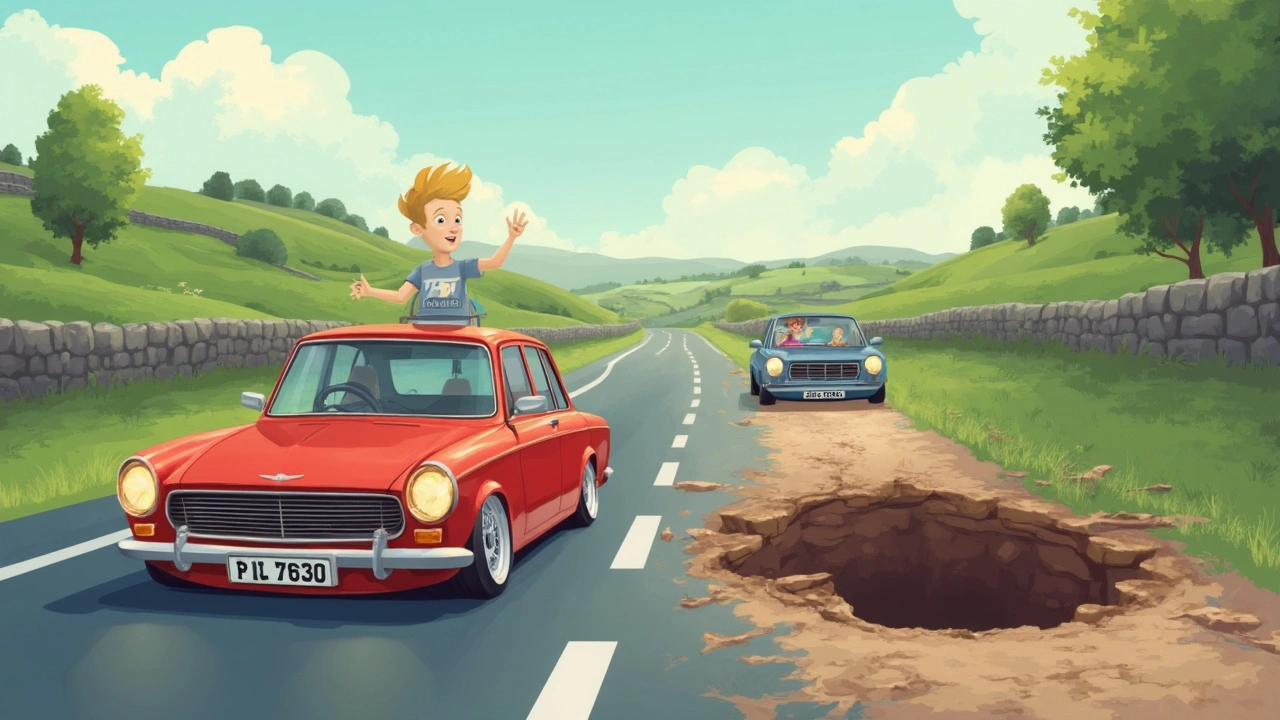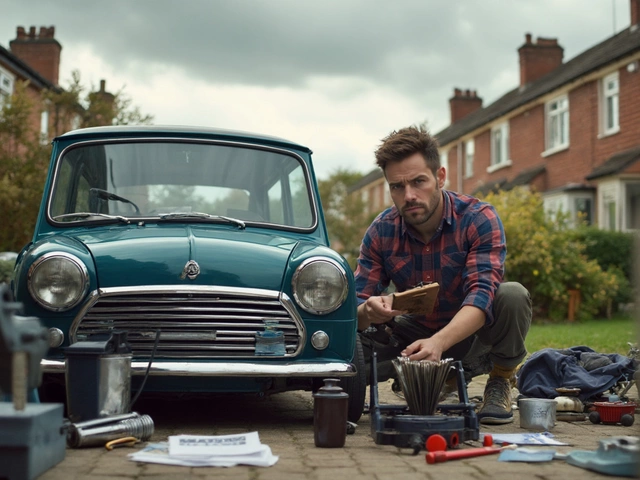Thinking of adding lowering springs to your car? Sure, they can give your ride a mean, aggressive stance. But, hang on a second—there’s more at play than just a cool look. Dropping your car changes how it drives, rides, and even how long your parts last.
The promise is tempting: better cornering, less body roll, and a tighter connection to the road. And yes, that lowered look turns heads. But what about the downsides? If you’re daily driving in the real world—jaw-cracking potholes, random speed bumps, or tight driveways—lowering springs can throw a few curveballs your way.
Before you order a set, it pays to know the side effects. You’re not just tweaking the ride height; you’re affecting the entire suspension system. Get the lowdown on how things like comfort, tire wear, and even safety might take a hit—and what you can actually do about it. Want that lowered look without ruining your daily drive? Here’s what you need to know, straight up, without the sugarcoating.
- How Lowering Springs Change Your Suspension
- What Happens to Ride Comfort?
- Effects on Steering and Handling
- Tire Wear and Alignment Issues
- Potential Safety Risks
- Tips for Avoiding the Worst Side Effects
How Lowering Springs Change Your Suspension
The second you bolt on lowering springs, you’re messing with the entire setup of your suspension. These springs are shorter and stiffer than stock, which means your car’s center of gravity drops. That’s great for handling—less body roll in corners and usually sharper steering. But it’s not all sunshine and smooth turns.
Let’s get into the real changes:
- Suspension Geometry: Lowering changes the angles at which your suspension arms and wheels sit. This is called "geometry," and it impacts everything from tire wear to how your car reacts mid-turn.
- Shock Absorber Compatibility: Most stock shocks aren’t built for shortened springs. If you don’t upgrade your shocks, you might get a bouncy, unstable ride.
- Ground Clearance: The obvious one—your car rides closer to the road. You’re more likely to scrape on speed bumps, steep driveways, or road debris.
- Bump Stop Engagement: The springs let your car sit lower, so you reach the bump stops (those rubber blocks at the end of the suspension travel) much sooner. This can make hard hits way harsher.
Here’s a quick rundown of what usually changes when you add lowering springs compared to stock:
| Aspect | Stock Springs | Lowering Springs |
|---|---|---|
| Ride Height | Standard/Original | 1-2.5 inches lower on average |
| Spring Rate | Softer | Stiffer (up to 30% higher) |
| Shock Strain | Normal | Increased, may wear shocks faster |
| Alignment Needs | Rarely | Almost always |
One more thing: lowering doesn’t just "look cool." You’re putting more stress on other suspension parts, like bushings and ball joints. They’ll wear out faster unless you swap them for performance versions or check them regularly.
The bottom line? Lowering springs totally change your suspension’s behavior. If you want your setup to last—and your car to stay predictable—you need more than just a set of shorter springs.
What Happens to Ride Comfort?
Let’s get straight: whenever you see a car dropped lower than stock, you can bet the ride comfort isn’t the same anymore. Lowering springs use stiffer material to keep your car from bouncing too much, which helps with cornering but kicks back at your comfort. Every little crack, pebble, or dip in the road? You’re going to feel them a lot more.
It’s not just your backside that feels it—your suspension system loses travel, so it can’t absorb bumps as well. If you drive on rough streets or deal with lots of construction zones, the ride can get jarring fast. Most lowering springs drop the car by 1 to 2 inches, and even this small change can make a big difference in how harsh bumps feel.
Check out how different setups stack up when it comes to ride comfort:
| Suspension Type | Ride Comfort (1=Worst, 5=Best) | Common Drop Height |
|---|---|---|
| Stock/OEM | 5 | 0" |
| Lowering Springs | 3 | 1-2" |
| Coilovers (Stiff Setting) | 2 | 1-3" |
You might notice more squeaks and rattles, especially in older cars. Sometimes, even the dashboard will chatter on rough pavement. And don’t forget: if you carry passengers or heavy loads, things get worse because there’s even less space for the suspension to work.
So, what can you do? If you want the look but don’t want to punish your spine, consider picking progressive-rate springs—these get stiffer only when you really compress them (for example, over big bumps or cornering hard). Also, be careful not to go too low; the more you drop, the rougher things get. If possible, keep the drop under 1.5 inches for city driving.
Bottom line: Changing your springs makes a real impact on ride comfort. If that’s something you care about, weigh your priorities before swapping out your lowering springs.
Effects on Steering and Handling
The main reason folks go for lowering springs is to squeeze more performance out of their car’s steering and handling. When you drop your car, you’re lowering the center of gravity. On the upside, that means there’s less body roll in corners, and the car feels tighter in turns. At higher speeds, the car stays flatter, which feels awesome if you like spirited driving. But here’s the kicker: it’s easy to mess things up if you’re not careful or don’t pair the springs with the right shocks.
When you install lowering springs but keep stock shocks, the suspension can bottom out more often. This impacts steering feel, sometimes making it heavier or—if the alignment goes out—twitchier than before. You might also notice bump steer, where hitting a bump makes your steering wheel shift unexpectedly. Not fun in daily traffic or on uneven roads.
Another issue is suspension geometry. Lowering changes angles like camber and toe, which can mess with straight-line stability. If your alignment isn’t dialed in after the install, expect uneven steering response. Sometimes, the car might even pull slightly to one side.
- Sharper cornering and less body roll feel great, but can make the car less forgiving at the limit.
- Quicker steering response, yet bumps and ruts can send sharper jolts through the wheel.
- Possible loss of travel and a risk of bottoming out if you use springs that are too aggressive or ignore matching shocks.
Let’s put some numbers to it. One test by Grassroots Motorsports found that a typical compact car with lowering springs reduced body roll by about 20% and improved slalom times by around 5%. But they also reported more frequent scraping and a need to re-align the car every few months if it saw daily bumps and potholes.
| Aspect | Change With Lowering Springs |
|---|---|
| Body Roll | Down by 15-25% |
| Steering Response | Quicker, but more sensitive to bumps |
| Alignment Needed | Yes, right after install and after big road impacts |
The bottom line: lowering springs can up your handling game but can also make your car more sensitive to poor roads and the wrong suspension setup. After the install, always get a performance alignment and keep an eye on how the car tracks, especially if you use it every day. Some handling gains come at the cost of more work to keep everything dialed in.

Tire Wear and Alignment Issues
Install lowering springs and you’re not just talking looks—you’re messing with how your tires meet the road. Shorter springs throw the suspension geometry off, and that’s a big deal for tire life. After lowering, it’s super common to see more aggressive wear on the inside edge of your tires. Why? The drop increases negative camber—meaning the tops of your tires tip inward—which can chew through rubber way faster if you don’t fix it.
Misalignment creeps in easily after you swap springs. Even a small change in ride height changes toe, camber, and caster angles. Stock alignment settings just don’t cut it for a lowered setup. If you skip a proper alignment, you’ll see uneven tread wear, sketchier handling, and a shorter tire lifespan.
Here’s how the numbers can stack up:
| Factory Spec | After Lowering (Uncorrected) | Impact |
|---|---|---|
| Camber: -0.5° | Camber: -2.0° | Faster inner tire wear |
| Toe: 0 mm | Toe: +2 mm | Tires scrub sideways, reducing tread life |
Replacing a set of performance tires can run $600 or more, so it’s no joke if they wear unevenly. If you daily drive, those costs add up fast. On top of that, some cars are tougher to adjust. Not all factory suspensions let you tweak camber or toe enough to compensate for a big drop. Sometimes, you’ll need extra hardware like camber bolts or adjustable control arms.
- Get an alignment as soon as you install lowering springs. Don’t wait weeks.
- If your tires are already wearing weird, don’t shrug it off. It just gets worse.
- Keep an eye on tread wear patterns; if you see one side wearing faster, head to an alignment shop ASAP.
The bottom line? Lowering springs make your car look good, but they can wreck your tire budget if you don’t dial in the setup. Pay attention to alignment, and you’ll keep your ride sharp and your wallet a little happier. And if you’re going for the lowering springs look, setting the alignment right is non-negotiable.
Potential Safety Risks
Dropping your ride with lowering springs isn't just about looks—a lower stance affects safety, sometimes in ways people miss. Let’s break down the biggest safety risks you’ll want to consider before making the swap.
- Lowering springs reduce ground clearance, which means even ordinary bumps and speed humps turn into real hazards. Scraping the undercarriage can damage oil pans, exhaust systems, or brake lines, all of which are expensive headaches.
- Your stopping distance can change. Shorter, stiffer springs might upset how weight shifts during hard braking—in some cases, this means less grip and a longer stop, especially if the rest of your setup isn’t matched to the springs.
- OEM (factory) shock absorbers weren’t built for the new ride height or firmer spring rate. This mismatch can lead to poor handling or even "shock blowout"—less control if things get sketchy, like during an emergency swerve.
- Tire contact patch changes if your alignment goes out of whack after lowering. You might notice the car pulling to one side or weird tire wear patterns. Both are big safety red flags, especially at highway speeds.
- You might mess with the car’s ability to clear debris, potholes, or flood water—things your stock ride shrugged off. That quick shortcut through a parking lot could suddenly leave you stuck or cause expensive damage.
Real talk: insurance companies sometimes jack up rates or deny claims if an accident is linked to a mod like lowering springs that weren’t installed by a pro or weren’t properly disclosed.
Check out this comparison on the typical safety issues faced before and after lowering:
| Safety Factor | Stock Suspension | Lowered with Springs |
|---|---|---|
| Ground Clearance | 140-160mm | 90-120mm |
| Shock Absorber Longevity | 80,000+ km avg. | Often < 50,000 km if mismatched |
| Tire Wear Pattern | Even | Possible inside/outside edge wear |
| Braking Stability | Optimal | Depends on full suspension setup |
If you ever feel your ride getting unpredictable after lowering—like if it skips over bumps or pulls under braking—get everything checked. An alignment and inspection can save you from bigger problems down the line. And if you’re not comfortable with tools, always let a trusted mechanic handle the install. Don’t gamble with safety to get a cooler look.
Tips for Avoiding the Worst Side Effects
So you want that aggressive look and better handling but don't want to wreck your ride comfort, chew through tires, or mess with your alignment? These tips will help you keep those side effects in check while still getting the most out of your lowering springs.
- Do your homework on spring brands and specs. Not all lowering springs are created the same. Go for a reputable brand that actually tests their products for your exact car model. Cheap, generic springs usually mean trouble—think harsh rides, faster wear, and awkward ride height.
- Pair your springs with good shocks. Stock shocks usually aren't designed for a lower ride height and will wear out fast. Upgrading to performance shocks keeps things smooth and improves both handling and ride quality.
- Get an alignment right after you install. This isn't optional. Lowering changes your suspension geometry, so a professional alignment will keep your tires wearing evenly and your car tracking straight.
- Check your tire pressures more often. A lower car can put extra strain on your tires. Keeping them at the right PSI extends their life and improves handling.
- Be smart about how much you lower. Dropping your ride more than 1.5-2 inches can cause headaches like excessive camber, constant scraping, and bigger suspension issues. Less is usually more for daily driving.
- Watch for bump steer and bottoming out. Some cars will need extra parts like adjustable sway bar end links, bump stop spacers, or camber kits to avoid weird handling or harsh impacts.
Here’s a quick rundown of how the most common lowering spring setups stack up in terms of comfort, handling, and maintenance needs:
| Drop Amount (inches) | Ride Comfort | Handling | Maintenance Needs |
|---|---|---|---|
| 1.0" | Mostly unchanged | Noticeable improvement | Low |
| 1.5" | Slightly stiffer | Good improvement | Moderate (more alignments) |
| 2.0" or more | Much stiffer, bumpier | Best in corners, worst in daily bumps | High (extra parts, frequent checks) |
One last thing: keep an eye (and ear) out after you install. Listen for popping, clunking, or uneven tire wear—these are signs that something’s off and needs fixing. Staying on top of these details means you’ll actually enjoy that new setup, not regret it weeks down the line.






